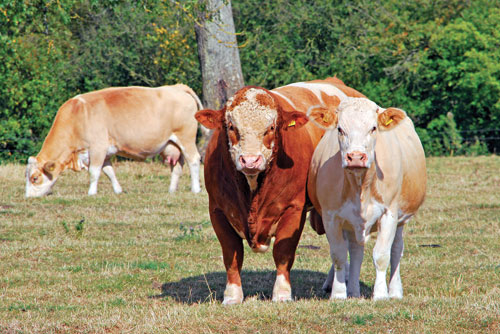Many farmers and ranchers strive to diversify their operation.
Diversity can help protect producers in hard times, promote creativity, and can benefit the land, and all parties who call the farm home.
Pairing both sheep and cattle on the farm has proven to be a beneficial way to diversify the operation and create a symbiotic relationship that works for herd, flock and farmer.
But will adding a new livestock venture be worth the time?
Some producers might be concerned about adding another species to their farm due to time constraints. But if a farmer is already running beef cattle, sheep are the logical next step, especially if fencing is already in place.
The University of California Cooperative Extension Small Farm Program said, “Experts say it takes about two hours of work per year to maintain one ewe and her offspring on farm pasture.
“Farmers caring for 20 to 100 ewes, thus would add 40 to 200 more hours of work to their regular duties.”
For producers who have been considering diversifying their farm or ranch, adding sheep to a cattle operation (or vice versa) can have lasting benefits from the multi-species symbiotic relationship.
One of the biggest benefits to raising cattle and sheep together on the farm is how efficiently the two animals can utilize almost all forages, and fertilize pastures in the process.
Sheep and cattle can both be moved easily within a rotational grazing program, or a management intensive grazing program (MIG). According to the University of California Cooperative Extension Small Farm Program, “Where a farmer already has some beef cattle, there are economical and biological advantages to adding some sheep to the operation. Shared pastures can work well. Sheep tend to prefer finer plants and cattle the coarser ones.”
Bechard Family Farm, in Conway, Mo, has utilized the relationship between sheep and cattle for years.
“We use it as a multi-species rotational grazing management program,” Bechard said. “Each of their diets is different.”
Efficient grazing triggers the forages on the farm to grow back even thicker, making the pairing of sheep and cattle a sustainable farm management practice. Sheep are also efficient at brush removal, which can aid in creating more pasture for the cattle. Kim Coulter, of Peak View Farm in Seymour, Mo, said her Katahdin sheep are good at clearing brush.
“Our hope is to put them in the woods,” she said, to further create new, open grazing areas for the rest of their livestock. Having two different species on the farm not only benefits the soil and the forages, but, according to Bechard, it also “adds another revenue stream.”
The demand for locally-raised meats in the U.S. is growing, and beef and lamb are popular products at farmers markets, health food and small grocery stores, and farm to table restaurants.






